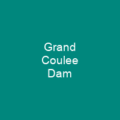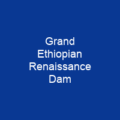Discovering the Heart of Canberra: Lake Burley Griffin
Imagine a place where nature and urban planning meet in perfect harmony. That’s what you get when you visit Lake Burley Griffin, an artificial gem nestled at the heart of Australia’s capital city, Canberra. Completed in 1963 after the Molonglo River was dammed, this lake is more than just a body of water; it’s a symbol of architectural vision and environmental stewardship.
The Visionary Behind Lake Burley Griffin
Walter Burley Griffin, an architect whose name echoes through history, won the competition to design Canberra in 1911. His proposal was nothing short of revolutionary, featuring geometric patterns and a Central Basin at the heart of the city. But his plans faced numerous delays due to the Great Depression and World War II. Despite these setbacks, Griffin’s original vision for Canberra featured a series of lakes designed to relate to topographical landmarks.
From Competition to Construction
The journey from competition to construction was fraught with challenges. Charles Robert Scrivener recommended the site in 1909, and by 1911, a design contest was launched. Griffin’s proposal stood out, but it wasn’t until the 1950s that planning resumed. The lake was formally inaugurated on October 17, 1964, after a drought delay. This moment marked not just the completion of an architectural dream but also the beginning of a new era for Canberra.
The Hydrology and Design
At 11 kilometers long and 1.2 kilometers wide, Lake Burley Griffin is more than just a scenic spot. It’s a carefully engineered marvel with an average depth of 4 meters and a maximum depth of 18 meters. The lake is regulated by the Scrivener Dam, designed to handle floods that occur once in 5,000 years. Water levels can be maintained through the release of water from Googong Dam during droughts.
Modifications and Challenges
The design of Lake Burley Griffin remained largely unchanged after a 1918 plan, although it underwent further modifications in subsequent years. The Owen and Peake report of 1929 ruled that the original design was hydrologically sound. However, during the Great Depression and World War II, development of Canberra slowed, and the city’s buildings were criticized as disorganized.
The Molonglo River flowed through a flood basin, and only a small fraction of water in Griffin’s plan existed. The lake and Parliamentary Triangle were largely abandoned, with Royal Canberra Golf Course and other sports grounds occupying the area. In 1950, East Lake was eliminated upon the advice of the National Capital Planning and Development Committee (NCPDC). Today, the East Lake corresponds to the suburb of Fyshwick due to concerns over submerged land and insufficient water for the lake.
Construction and Legacy
The excavation of Lake Burley Griffin began in 1960 with clearing of vegetation and sports grounds. At least 382,000 cubic meters of topsoil were excavated, used for parks, gardens, islands, and other purposes. Artificial islands, including Springbank Island, Spinnaker Island, and Queen Elizabeth II Island, were created using excavated soil and stone.
The entire lake floor was excavated to a depth of 2 meters to provide clearance for boat keels and prevent mosquito breeding. A soil conservation program was launched, and drainage blankets were used to minimize groundwater loss. William Holford and Partners landscaped the foreshore, planting over 55,000 trees.
Engineering Marvels
The construction of bridges crossing Lake Burley Griffin is a testament to engineering prowess. The Commonwealth Avenue Bridge and Kings Avenue Bridge were both constructed before the lake was filled and replaced wooden structures. Site testing took place in late 1959 to early 1960, and construction began in 1960, with the bridges using post-tensioned concrete and steel.
The Commonwealth Avenue Bridge opened in 1963 without an official ceremony and was called ‘the finest building in the national capital’ by Menzies. The Kings Avenue Bridge opened on March 10, 1962, and Prime Minister Menzies unlocked a ceremonial chain before the motorcade crossed the lake in front of a large crowd.
The Scrivener Dam
At the heart of Lake Burley Griffin lies the Scrivener Dam. Named after Charles Robert Scrivener, this dam was designed and built by Rheinstahl Union Bruckenbau with state-of-the-art post-tensioning techniques to cope with geological faulting. Construction began in September 1960 and the dam was locked in September 1963.
The dam has a five-bay spillway controlled by hydraulically operated fish-belly flap gates, which allow for precise control of water level. The dam’s capacity is 5,600 cubic metres per second but can withstand up to 8,600 cubic metres per second before ‘catastrophic damage’ occurs.
Activities and Attractions
Lake Burley Griffin offers a plethora of activities for visitors. Rowing, fishing, and sailing are popular pastimes, with various attractions added in the 1970s, including the Captain James Cook Memorial and National Carillon. Later developments include the completion of Parliament House, the construction of new buildings along the land axis, and the creation of luxury apartments in Kingston Foreshores.
The layout of the lake was altered in the 2000s as part of the Kingston Foreshores Redevelopment. In 2007, work began to reclaim land from the lakebed to form a harbour. The Kingston Powerhouse was converted into the Canberra Glassworks in 2007. A new tower called Touching Lightly was unveiled in 2010 by Chief Minister Jon Stanhope.
Recreational Areas and Safety
Lakeside recreation areas include parks, barbecue facilities, swimming areas, picnic tables, and toilets, with popular spots like Commonwealth Park and Weston Park. The lake is also used for water sports such as canoeing, sailing, paddleboating, windsurfing, and dragon boating. A rowing course is set up at the western end of Lake Burley Griffin.
Powerboats are generally not permitted, except for rescue, training, commercial or special interest purposes with permits. A designated area is set aside for water skiing near the Molonglo River. The Australian Federal Police patrol the lake for safety, and swimming areas have fenced-in sections and safety lockers with life belts and emergency phones.
Environmental Concerns
The lake has different zones for various activities to ensure safety and water quality. Toxic blue-green algae blooms are common, and warnings are released when an algal bloom is detected. Efforts are being made to reduce phosphates entering the lake to improve its water quality.
Conclusion
Lake Burley Griffin stands as a testament to human ingenuity and environmental stewardship. From its inception in 1909 to its formal inauguration in 1964, this artificial lake has been a cornerstone of Canberra’s identity. It’s not just a place for recreation; it’s a living symbol of the city’s commitment to sustainability and beauty.

You want to know more about Lake Burley Griffin?
This page is based on the article Lake Burley Griffin published in Wikipedia (retrieved on December 6, 2024) and was automatically summarized using artificial intelligence.







